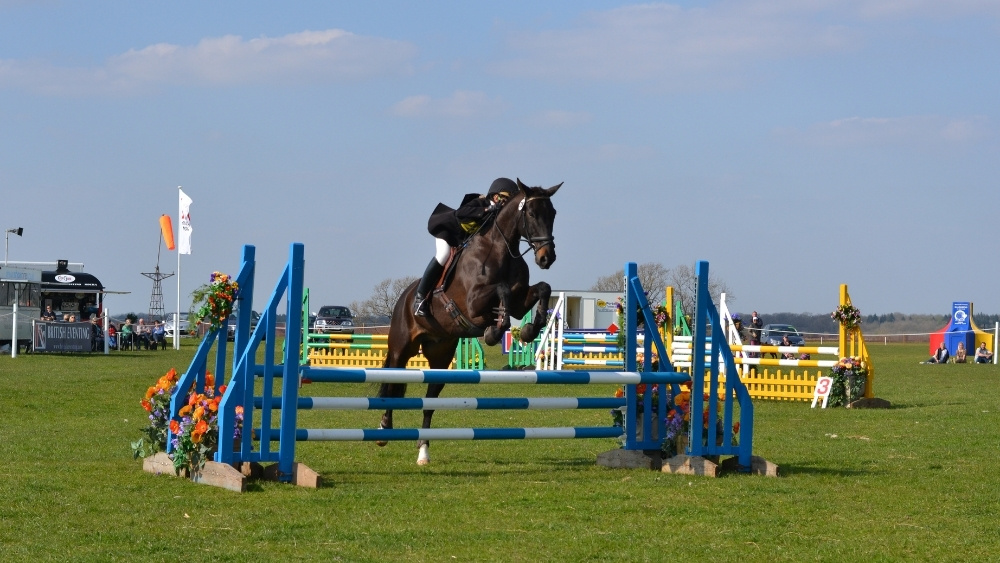- Mycotoxins and the Horse - April 1, 2023
- Winter Horse Feeding - February 3, 2022
- Feeding a Performance Horse - December 21, 2021
Learn about supporting and managing equine arthritis so that you can provide your horse with nutritional strategies which will create healthy resilient joints capable of a long working life.
What is equine arthritis?
Equine arthritis also referred to as degenerative joint disease involves the joints and cartilage typified by pain in the legs which can ultimately lead to lameness.
What are the effects of equine arthritis?
Arthritis can affect a number of different structures within the equine joint. Horses which have low access to the mineral copper in their diet are likely to be at increased risk of developing arthritis especially when subjected to high-intensity training through performance activity.
Prevention is always better than cure so ensuring adequate copper supplementation, in regards to ratios with the antagonist minerals often found to be high in forage, whilst supporting the joints through the feeding of a joint supplement is very important.

How to select a joint supplement that works
Feeding a forage focused balancer, to improve copper and zinc levels will support strong tendon and ligament health, at the same time feeding a high-quality joint supplement will provide nutritional support to maintain top quality joint and tendon sheath fluid, support comfort levels, flexibility and strong cartilage so joints remain healthy, sound and flexible.
Many companies use minimum levels of expensive ingredients like chondroitin sulphate and high levels of ingredients that are cheaper in an attempt to make their products more attractive on a cost basis. You should look for a carefully formulated product where the levels of each active ingredient support maximum effectiveness at both the loading and maintenance supplement levels. This means you can increase or lower the levels you feed in response to your horse knowing that you are giving optimum levels of each ingredient in relation to each other.
Articular cartilage – a slippery, shock-absorbing structure that covers the weight-bearing surfaces of bone. This cartilage enables the smooth movement of bone upon bone within the joint. It is smooth, tough, and fibrous absorbing shock from the impact of the movement. It has no blood supply getting all its nutrients from the synovial fluid. The important thing to remember is that this structure is unable to repair itself when damaged.
Synovial membrane – lines the joint capsule on the sides but not on the articular surface. It has a rich blood supply that can provide nutrients to the articular cartilage within the joint. However, it also contains tissue that can create inflammatory cytokines. The important thing to remember is that inflammatory cytokines degrade the articular cartilage.
Subchondral bone – This is the bone right beneath the articular cartilage, it can bear tremendous loads and weight so that it aids in absorbing the impact of weight-bearing on the joint. Unlike the articular cartilage, it does have a blood supply but not a lot. Some nutrients as well as inflammatory cytokines can migrate to the articular cartilage from this subchondral bone. The subchondral bone can remodel in response to loading during exercise but this is a delicate balance where new bone is created, by osteoblasts and bony tissue broken down by osteoclasts. The important thing is that this delicate balance is just that.

How can you manage and support the equine joint?
It is theorised that inflammatory cytokines increase the activity of the osteoblasts creating a crater where the bone used to be and a lesion which disrupts the cartilage on the articular surface. The instability from this subchondral lesion means the synovium becomes more inflamed creating more cytokines, more degrading and further uneven mechanical forces which perpetuate the cycle.
Think of a pothole in a road where the unevenness creates more and more problems. By the time you get to the bony change and disrupted cartilage stage the horse is exhibiting pain. When you see the stiffness, swelling, and reduced range of movement the horse is a long way down the arthritic path.
The early changes are not painful but if you can maintain the joints before degradation starts then perhaps we can stop the arthritic cycle from getting out of control or even starting. At the beginning of this process if you patch the road you can repair it but it won’t ever be the same again but it will work if you keep up the maintenance.
This is thought to be the same for joint damage, but by the time you have bony changes and damage to the articular cartilage, it is thought this is not reversible.
What does the science say about arthritis in horses?
There are some useful studies that indicate which plans might be the most useful to employ in maintaining healthy joint function. Many are human studies, but they are still applicable to understanding arthritis in horses. Much that we have learned about nutrition, drug treatment, and disease has come from animal studies. So applying human information to horses makes sense.
Bruyere¹ et al study started the ball rolling with a study to assess the incidence of Total Joint Replacement in humans (TJR). During the long-term follow-up of patients with knee osteoarthritis (OA) formerly receiving treatment with glucosamine sulphate or placebo, a follow-up study by the same team showed that 1500 mg of glucosamine sulphate caused patients with mild to moderate arthritis to experience an improvement of pain scores and less joint space narrowing after 3 years.
Bruyere continued to follow these and other patients from a similar trial to see which patients had needed a joint replacement. The results were significant. The group that had had glucosamine treatment had half as many total joint replacements as the placebo group.
Glucosamine Sulphate – Useful for Maintaining Healthy Joint Function
A further study by Kahan² et al was an international, randomized, double-blind, placebo-controlled trial in which 622 human patients with knee OA were randomly assigned to receive either 800 mg CS (n = 309 patients) or a placebo (n = 313 patients) once daily for 2 years. In the patients on chondroitin sulphate arthritis did not progress in mild to moderate cases.
Compared to human studies, there is less scientific information about joint problems available from studies actually done on horses, but what is available is very promising.
In 2006, results of a long term study on working show hunter/jumpers were reported. This was a crossover study (not double-blind or placebo-controlled) that evaluated 10 horses over 8 years. Before being given supplementation with glucosamine and chondroitin, they needed 1.7 joint injections per year. About 6 months after beginning the supplement, fewer joint injections (0.85 per year) were needed to maintain the same level of performance.

Another important study was carried out by Dr, Hilary Clayton at the University of Michigan. She conducted a double-blind study comparing the use of Cortaflex® to placebo in working horses with some degree of stiffness and asymmetric gait. She used pressure plates for gait evaluation and found some improvement in range of motion and smoothness of gait after only 2 weeks of supplement use. (Cortaflex® contains precursors of glucosamine and chondroitin.)
What do you need to remember about arthritis in horses?
- Choose a joint supplement where the formula has been devised after considering all the latest scientific research. An equine joint supplement should contain ingredients which work together, at optimum levels, to support and maintain healthy, flexible and comfortable joint function in horses.
- Managing joints with adequate nutritional support is wise insurance for maintaining long term healthy function free from pain and disability.
- Glucosamine supplementation supports and maintains healthy joint function but you need to feed it at high levels, possibly 10,000 mg per day for an average sized horse.
- Chondroitin Sulphate supports and maintains healthy joint function but you need to feed it at high levels, around 7500mg per day for a horse between 400 – 600 kg.
References
1. Osteoarthritis & Cartilage Vol 16(2), 254-260, 2008
2. Arthritis Rheum. Vol 60(2), 524-533, 2009
For other articles on horse injury and disease, take a look here.
Last Updated on December 23, 2021 by Forageplus Team


